Geochang Suseungdae Rock (거창 수승대)
14.6 Km 13838 2020-08-28
2, Eunhari-gil, Geochang-gun, Gyeongsangnam-do
+82-55-943-5383
Suseungdae Rock is located near Hwangsan Village in Geochang-gun, Gyeongsangnam-do. The rock was originally called Susongdae Rock during the Three Kingdoms Era when it served as the final stop for envoys sent from Baekje to Silla. The name later changed to Amgudae Rock during the reign of Joseon King Jungjong. It wasn't until 1543 that it was called Suseungdae Rock. There are many historical and cultural sites in the area relating to the Geochang Sin family.
Jungon Head House
14.6 Km 803 2021-04-09
13, Gangdong 1-gil, Wicheon-myeon, Geochang-gun, Gyeongsangnam-do
+82-10-2518-4727
Located in Geochang County in Gyeongsangnam-do Province, the Head House of Mr. Jeong On shows a peculiar style of ancient Korean architecture. Since the house is located in a basin surrounded by high mountains, it was built in overlapping style as the typical architectural style in the northern region in order to endure the cold. In addition, the "eyebrow" roof was added as protection from the frequent rain. The house is mainly visited by families on weekends and research organizations on weekdays. Visitors can enjoy various healing and cultural activities in the trekking course of Mt. Geumwonsan and the Suseungdae Amusement Park, which are 1km away. The Anchae is used by the owner family, and the Sarangchae, Jungmunchae, and Daemunchae are used as guest rooms. Groups can rent the entire Sarangchae building.
Wonhak Goga (Wonhak Old House) [Korea Quality] / 원학고가 [한국관광 품질인증]
14.7 Km 10637 2019-12-05
109-5, Hwangsan 1-gil, Wicheon-myeon, Geochang-gun, Gyeongsangnam-do
+82-10-5359-2224
Located in Geochang, Wonhak Goga (Wonhak Old house) is regarded as the most beautiful hanok, or traditional Korean house, in the village of Hwangsan. Designated as Folk Material No. 17 in recognition of its value as a historic material, it is the largest and best preserved noble house in Gyeongsangnam-do Province, and is currently managed by Park Jeong-ja, the wife of the eldest son of the head family. It was originally opened to the public for the annual Keochang International Festival of Theater (KIFT) as there was insufficient accommodation to lodge the thousands of visitors to the festival. Therefore, the county suggested that Park provide people with a hanok accommodation to promote the village’s traditions. Accepting the suggestion, Park renovated the house by expanding the sarangchae room installing a modern-style washroom, and providing clean high-quality bedding. The house itself consists of seven structures in total including the anchae, sarangchae, jungmunchae, gotganchae, a tall gate, and a rear gate. Both the sarangchae and anchae have a half-hipped roof. Notably, the sarangchae has a total area of 99m2 and features a large girder and a round foundation stone. This traditional hanok house also boasts high-quality, refined interior decoration. The Geochang area is well known for both the Suseungdae scenic point, whose splendid surroundings include pure crystalline water, rocks, and a pine grove, and the Keochang International Festival of Theatre (KIFT) which is held every summer. After passing the main gate of the Suseungdae scenic point, in Whicheon-myeon, Gaochang-gun, and continuing along the road, visitors will come to Hwangsan Village, where a 600-year-old-zelkova tree welcomes them. In addition, visitors can enjoy the mural paintings created as part of a public art project by Geochang County while walking along the 1.2km-long stonewall (designated as a Gyeongsangnam-do Folk Material). The village of Hwangsan consists of two districts, one of which contains about fifty 100- to 200-year-old hanok houses, as well as Wonhak Goga, which has stood at the center of the village for about 500 years. Wonhak Goga, or the Old House of the Shin Clan, was originally built by Shin Gwon (pen-name Yosu), but was then demolished and rebuilt by Shin Jong-sam, a 10th-generation descendant of the family, in 1927. It is also a renowned family house and has remained a symbol of the family’s wealth and authority for many generations. Park’s father-in-law, Shin Do-seong, was a member of the National Assembly and worked as the Ministry of Unification, while her husband, Shin Wi-beom, worked as a school juristic person, gaining people’s confidence and trust. Furthermore, the house stands in an auspicious location in terms of geomantic principles, according to which the family’s descendants will have a peaceful and prosperous life for the next 400 years. Park hopes that guests will enjoy their stay amid the serene atmosphere of this old hanok house.
Haneullae Deulkkot Village (하늘내들꽃마을 [녹색농촌체험])
14.9 Km 14563 2024-04-07
554, Cheoncheonbung-ro, Jangsu-gun, Jeonbuk-do
+82-63-353-5185
Situated in Jangsu, Jeollabuk-do, Haneullae Deulkkot Village, as the name suggests in Korean, it is a village nestled alongside the Cheoncheon stream (haneullae means ‘heaven creek’). The area is blessed with clear shallow creek, a green mountain and a field of wild flowers (deulkkot). In the small ecological park there is a 1.6 kilometer square building, a playground, a farm, a garden and a pond occupying nearly 10,000 square meters. Next to the grassy playground you’ll find a therapeutic pebble path made for walking on bare foot, towering trees scattered around the playground offering some cool shade and a few swing chairs attached to the tall trees. There are three wooden look-out stations also shaded by the platanus trees. And in a corner of the playground is a campground capable of accommodating up to ten tents. The pond is home to more than ten varieties of water plants, including the lotus and water hyacinth. There are also some colourful native water life, such as the Crucian carp, daces, dark chubs, Chinese minnows, loaches, freshwater snails and marsh snails.
The cafeteria is all made of pine. Visitors can breathe in the soothing woody aroma, take in the view of the park all while having a meal. You can go on hiking trails, rest afterwards with some tea then walk to the local market in a pavilion. Also, people can visit the local compost centre and earthworm breeding farm, as well as the nearby roosters, a protected species native to Korea.
Birthplace of Nongae (논개생가)
18.9 Km 15425 2024-04-07
558, Uiam-ro, Jangsu-gun, Jeonbuk-do
+82-63-350-1636
Nongae was born in Juchon Village in the 7th year of King Seonjo (September 3, 1575). A clever and beautiful young lady, Nongae voluntarily registered as a gisaeng (female entertainer) at the age of 19 when the nation was at risk of invasion during the Imjin War. While entertaining one evening, she led Japanese general Keyamura Rokusuke to the edge of a cliff and flung her arms around him, casting both herself and the general to their deaths in the Jinju Namgang River.
To commemorate her faithfulness and allegiance to her country, a project to restore her place of birth was completed in September 2000, drawing many visitors. Nearby Nongae’s birthplace are many tourist attractions, including Deogyusan Mountain and Odongje Pass and a hiking trail that connects Jangansan County Park, Jijigyegok Valley, and Donghwa Dam.
Muju Firefly Market (무주반딧불시장(무주반딧불장터))
19.0 Km 19926 2024-04-06
2, Jangteo-ro, Muju-gun, Jeonbuk-do
+82-63-324-0692
Muju Firefly Market is a traditional fifth-day market, operating only on days ending in a 1 or 6. The market is the representative traditional market of Muju, with a history of over 100 years. Vendors at the market bring their fresh produce to sell in a variety of small stalls set up. Products on sale range from agricultural products to daily necessities and junk food.
Muju Firefly Festival (무주 반딧불축제)
19.0 Km 83152 2024-04-07
326-14, Hanpungnu-ro, Muju-gun, Jeonbuk-do
+82-63-324-2440
The Muju Firefly Festival takes place every fall in the pure environment of Muju, a natural habitat for fireflies and the marsh snails the fireflies feed on. The festival offers many attractions and activities to learn more about the beautiful nature and creatures that live in it.
Kirin motel [Korea Quality] / 기린모텔 [한국관광 품질인증]
19.2 Km 196 2024-04-07
74 , Dancheon-ro, Muju-gun, Jeonbuk-do
+82-63-324-5051, +82-10-4120-5562
Kirin Motel is in the center of Muju-eup, Jeollabuk-do, and is conveniently located for restaurants, shops and other facilities. Completely remodeled in 2018, the motel is modern and clean. Muju Resort and Gucheon-dong Valley are 25 minutes away by car, and the Muju Firefly Festival venue just a walk away. While the motel is especially popular during the festival, room prices stay the same year-round.
Rajetongmun Gate (라제통문)
19.5 Km 25126 2024-04-07
Rajetongmun-ro, Muju-gun, Jeonbuk-do
+82-63-322-2905
The historical border of the Silla and Baekje Kingdoms, Rajetongmun Gate of Seolcheon-myeon, Muju was formed from a rock cave in Seokgyeonsan Mountain. The tunnel is approximately 3 meters in x_height and 10 meters in length, and divides the villages of Sindu Maeul into Dugil-ri, Seolcheon-myeon and Inam Maeul in Socheon-ri. During the Three Kingdoms Period, the rocky ridges of Seokgyeonsan Mountain drew the boundary of Silla's Mupung in the east with Baekje's Seolcheo to the west.
Tracing the history from the Three Kingdoms Period to the Goryeo dynasty, the cultures and traditions of the two regions were markedly different. If curious about the difference, one could simply stop by Seolcheon on market day, where the Muju and Mupung local
dialects and customs can easily be distinguished.
People used to cross Seokgyeonsan Mountain by a footpath along the rocky ridge to travel between Seolcheon and Mupung. During the Japanese occupation, a new road was created by turning a cave into a tunnel through the mountain so cows and horse carts could freely pass from Muju to Gimcheon.
General Kim Yoo Shin from the Silla Kingdom, the hero of unification of the Three Kingdoms, often passed by the gate, later giving rise to the gate's nickname, Tongilmun (literally "Unification Gate"). The gate
is number one on the list of 33 scenic sites in Gucheon-dong.
Muju Rafting (무주래프팅)
19.6 Km 12915 2024-04-07
5-11, Jamdu-gil, Muju-gun, Jeonbuk-do
+82-63-322-7745
Muju Rafting resort is located on the upper Geumgang River and offers rafting, survival game, hiking, and fishing programs. The area is over 9,900 ㎡ in size and can accommodate lodging for up to 200 guests.
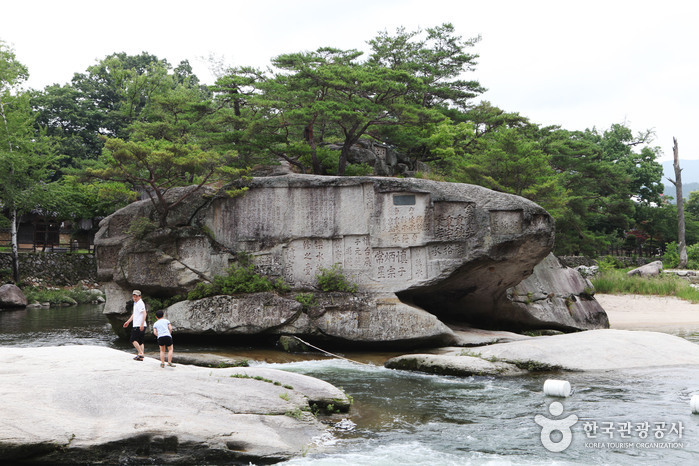
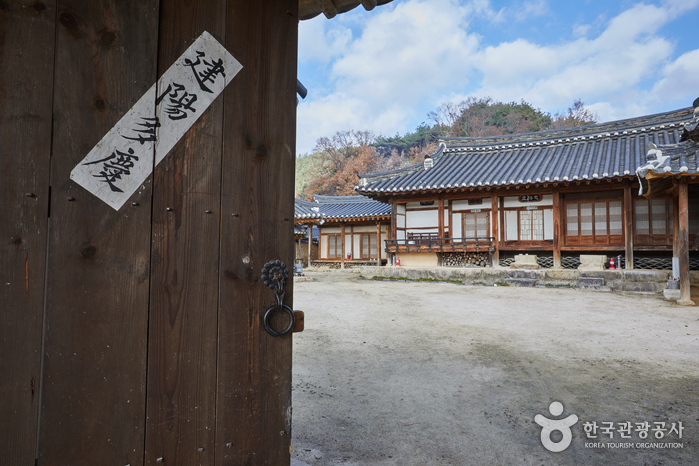
![Wonhak Goga (Wonhak Old House) [Korea Quality] / 원학고가 [한국관광 품질인증]](http://tong.visitkorea.or.kr/cms/resource/13/2572413_image2_1.jpg)
![Haneullae Deulkkot Village (하늘내들꽃마을 [녹색농촌체험])](http://tong.visitkorea.or.kr/cms/resource/19/2515519_image2_1.jpg)
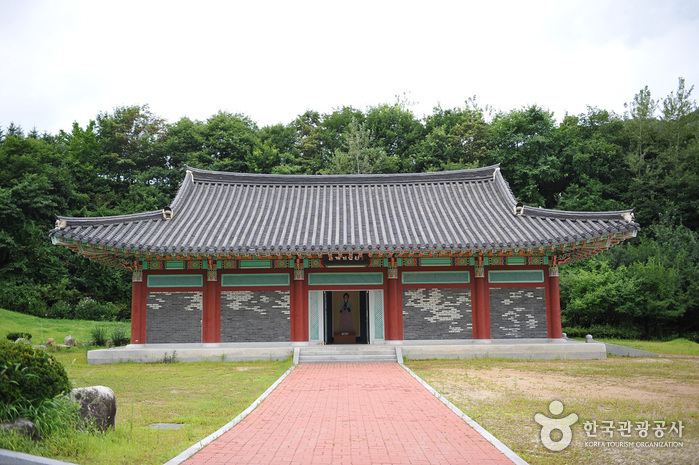
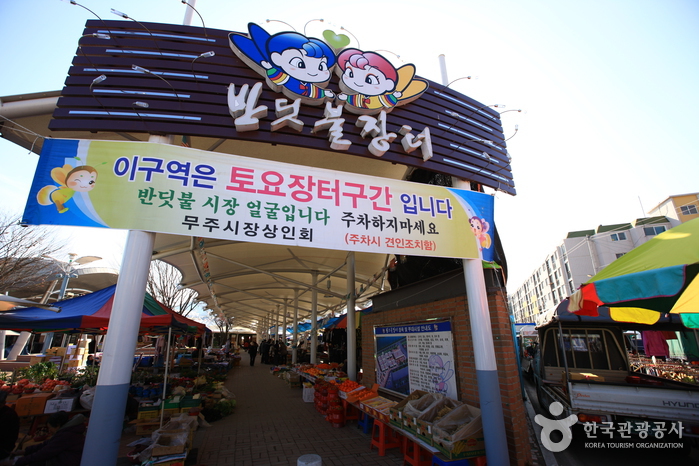
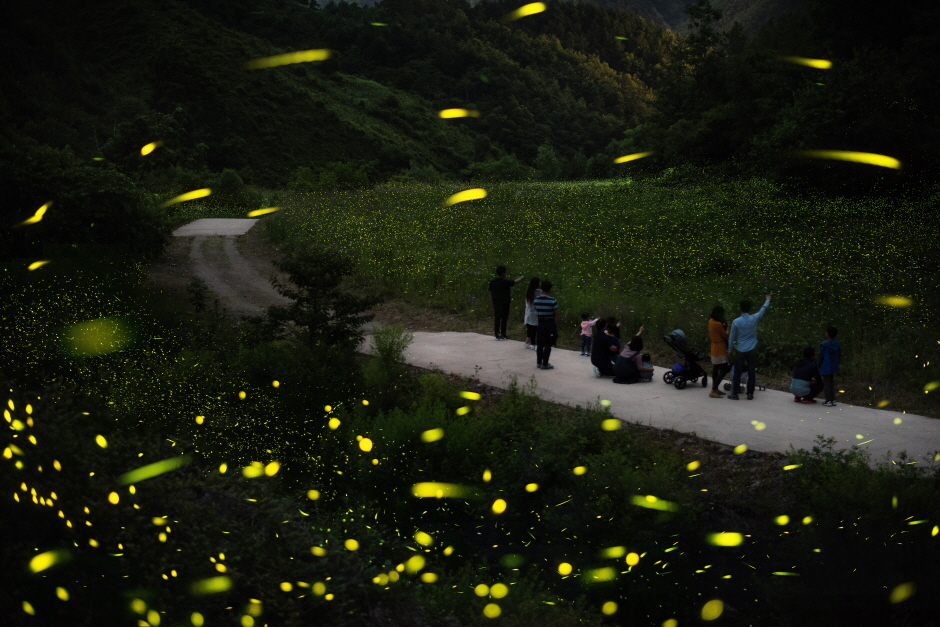
![Kirin motel [Korea Quality] / 기린모텔 [한국관광 품질인증]](http://tong.visitkorea.or.kr/cms/resource/93/3021693_image2_1.jpg)
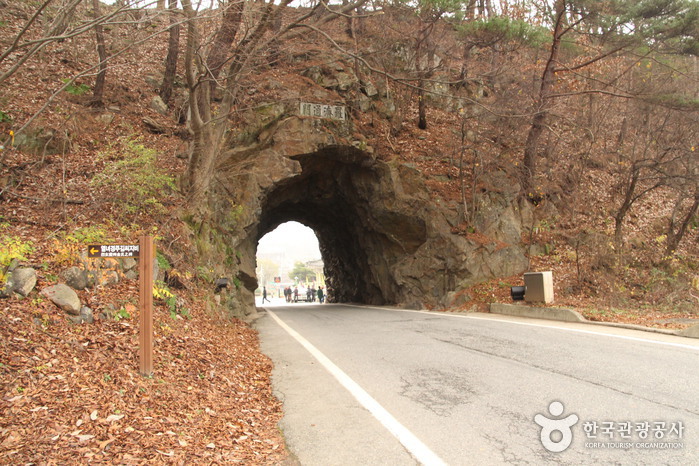
 English
English
 한국어
한국어 日本語
日本語 中文(简体)
中文(简体) Deutsch
Deutsch Français
Français Español
Español Русский
Русский